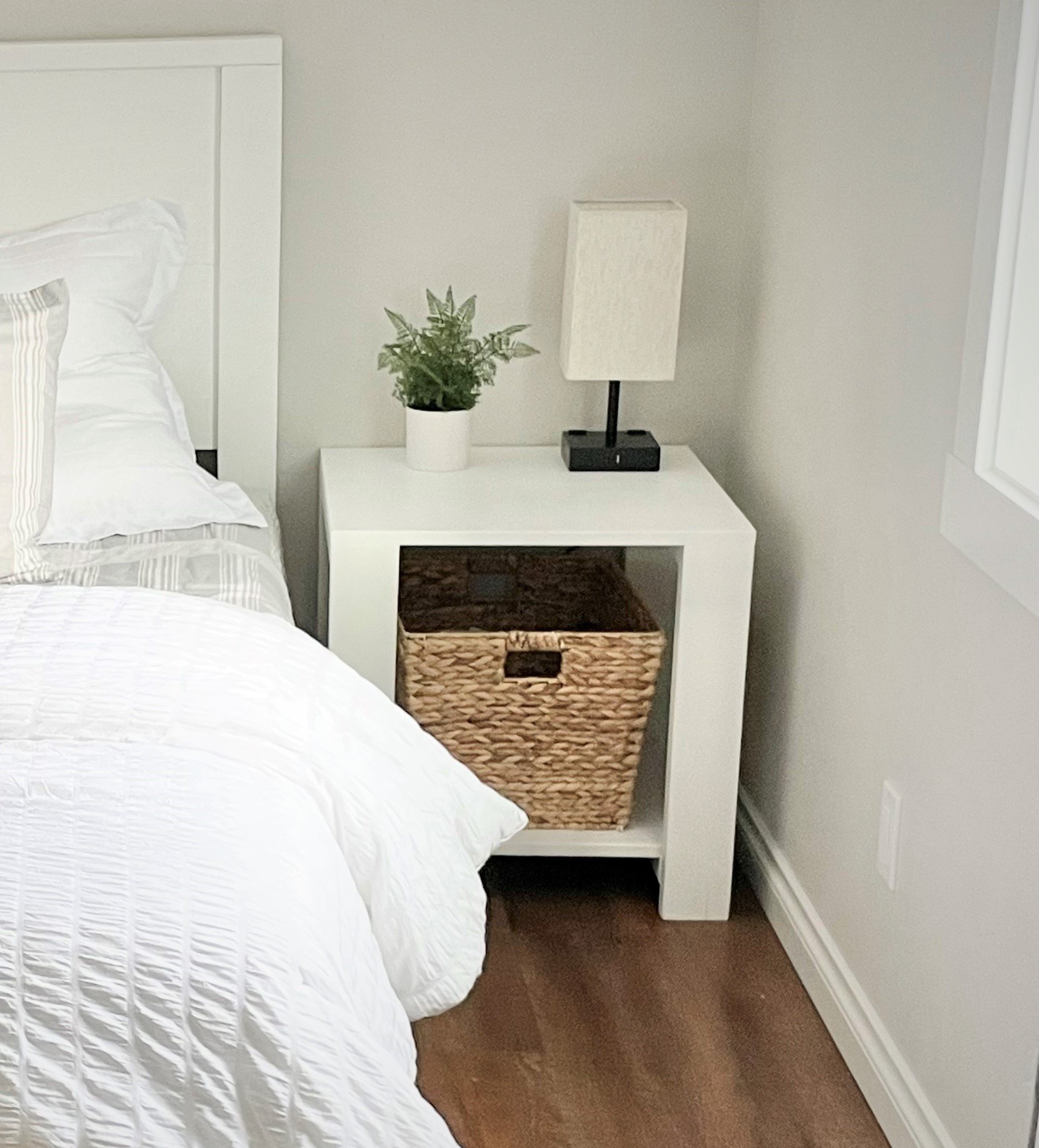
If you need an inexpensive and easy to make nightstand or side table, try this super simple end table or nightstand. Generously sized and sturdy, with a low bottom shelf for easy access, the clean lines blend with almost any style or decor. Solid wood construction, paint or stain any color.
This is our easiest to build end table, side table, bedside table or nightstand plan. Free step by step plans with diagrams, shopping and cut list from Ana-White.com
Related: Compact Modern Farmhouse Bed Plans
Pin For Later!
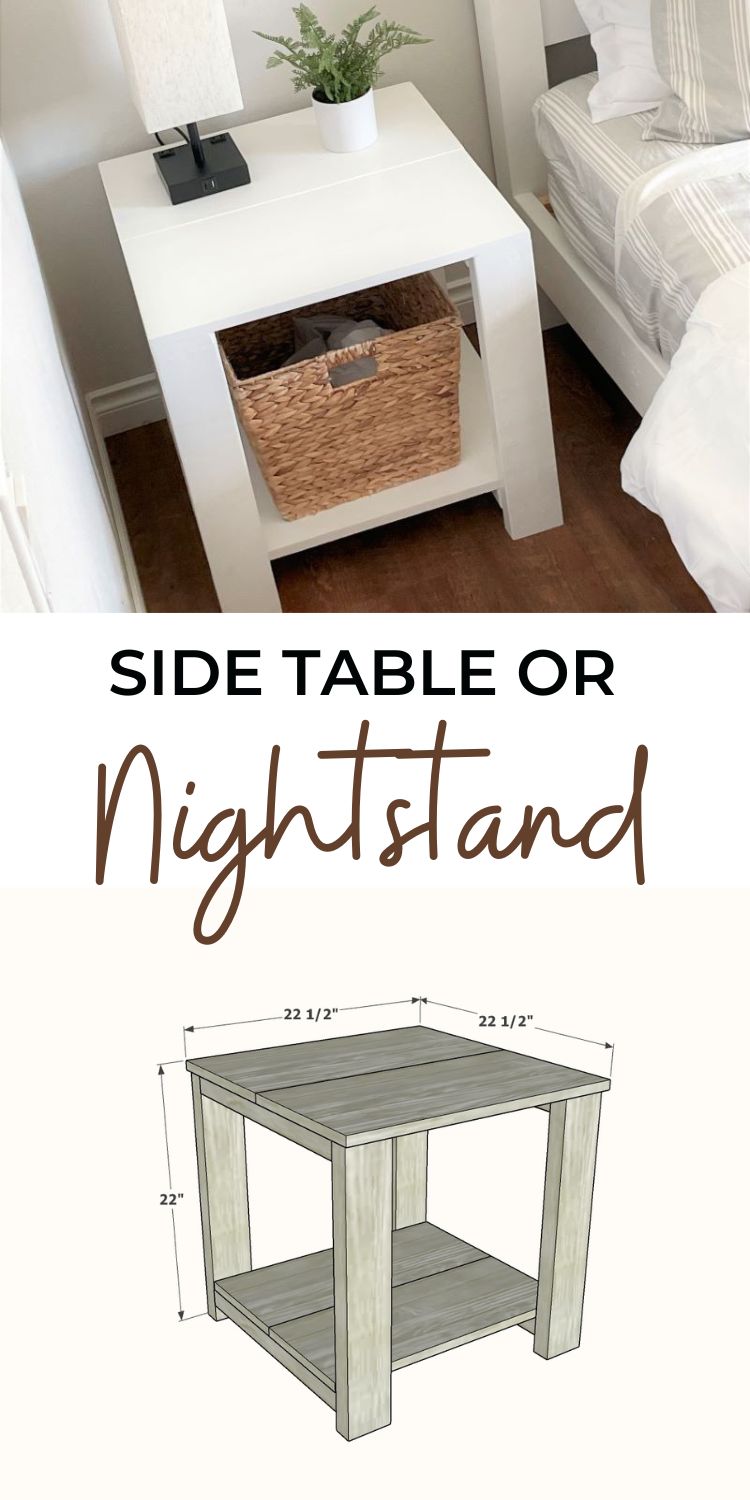
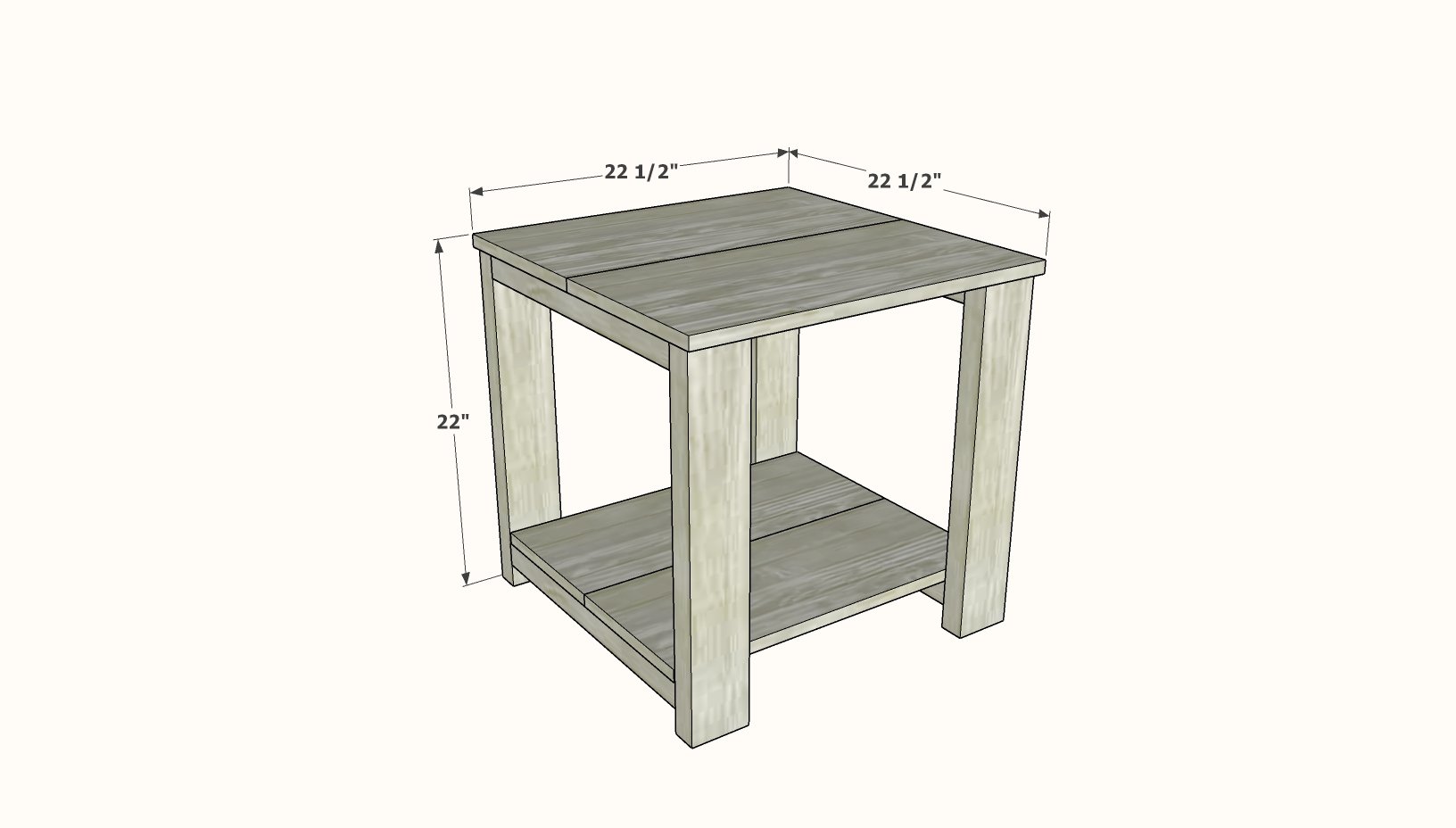
Preparation
- 2 - 2x4 @ 8 feet long or stud length
- 1 - 1x10 @ 4 feet long
- 1 - 1x12 @ 4 feet long
- 16 - 2-1/2" long self tapping screws, star bit like SPAX or GRK brands
- 32 - 1-1/2" to 2" long self tapping screws, star bit like SPAX or GRK brands, OR use 1-1/4" brad nails and wood glue
- 4 - 2x4 @ 21-1/4" - legs
- 4 - 2x4 @ 19" - side supports
- 2 - 1x10 @ 22" - bottom shelf
- 2 - 1x12 @ 22-1/2" - top shelf
For professional looking furniture, good, straight cuts are very important. Use a miter saw or chop saw, or a circular saw with guide to make cuts first.
Measure and cut each piece.
Use a flat, level surface to construct the project.
Instructions
Step 2
Attach the bottom shelf 1x10 boards inside the leg sets, so the edges are flush on the outsides.
Use either glue and 1-1/4" brad nails to attach, or shorter star bit screws.
For paint grade, star bit screws are easy to fill with wood filler and hide and will be a stronger joint.
For a stain finish, nails are easiest to hide. Just use a good amount of glue.
Be careful to make sure the legs are square to each other, you will know if the edges of the 1x10s aren't lining up right.
Step 3
Repeat for the top 1x12s.
NO Top Overhang Option - I cut the 1x12 top pieces at 22" long. Since this was a bedside table (where the back is against a wall), I started at the front 1x12, flush on the front and sides. Then I added the back 1x12 and let it overhang about 1/2" on the back. For a floating side table or end table where the back is visible, you can trim the back edge with a circular saw.
When dry, sand entire project with 120 grit sandpaper. Remove all sanding residue with a vacuum with soft bristled brush. Also wipe clean with a damp cloth.
A good sanding will make a huge difference in the overall success of the project.


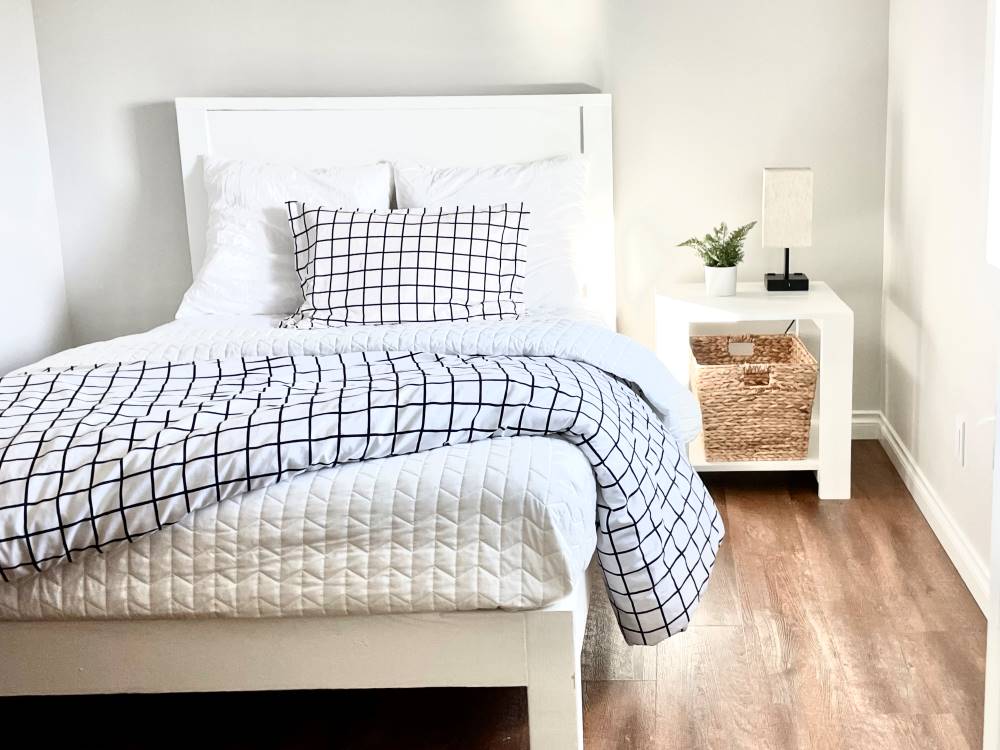
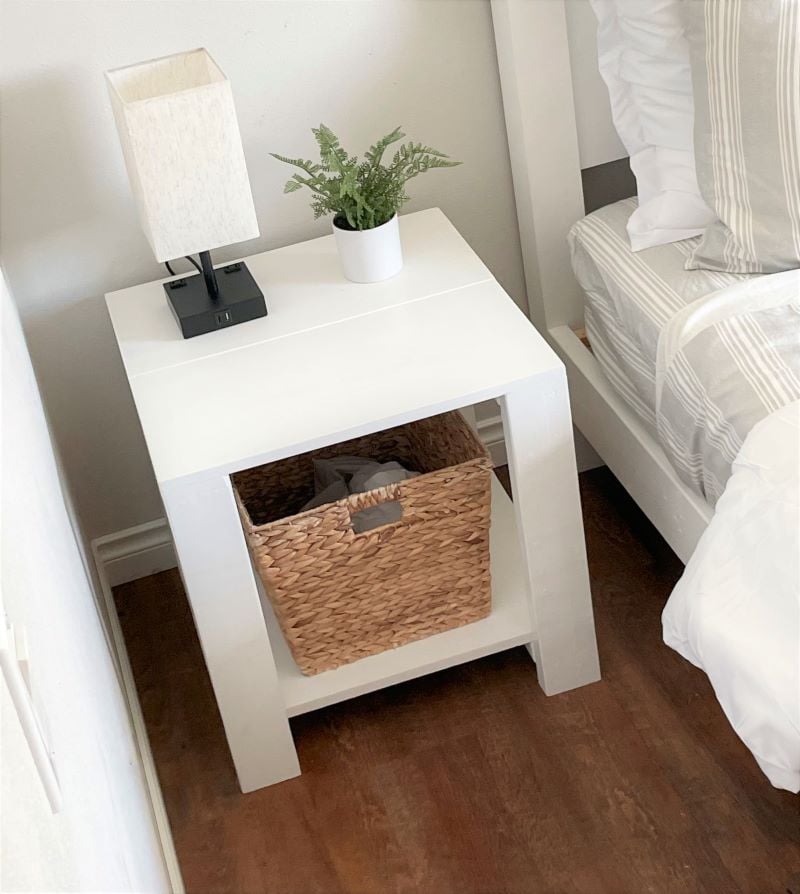








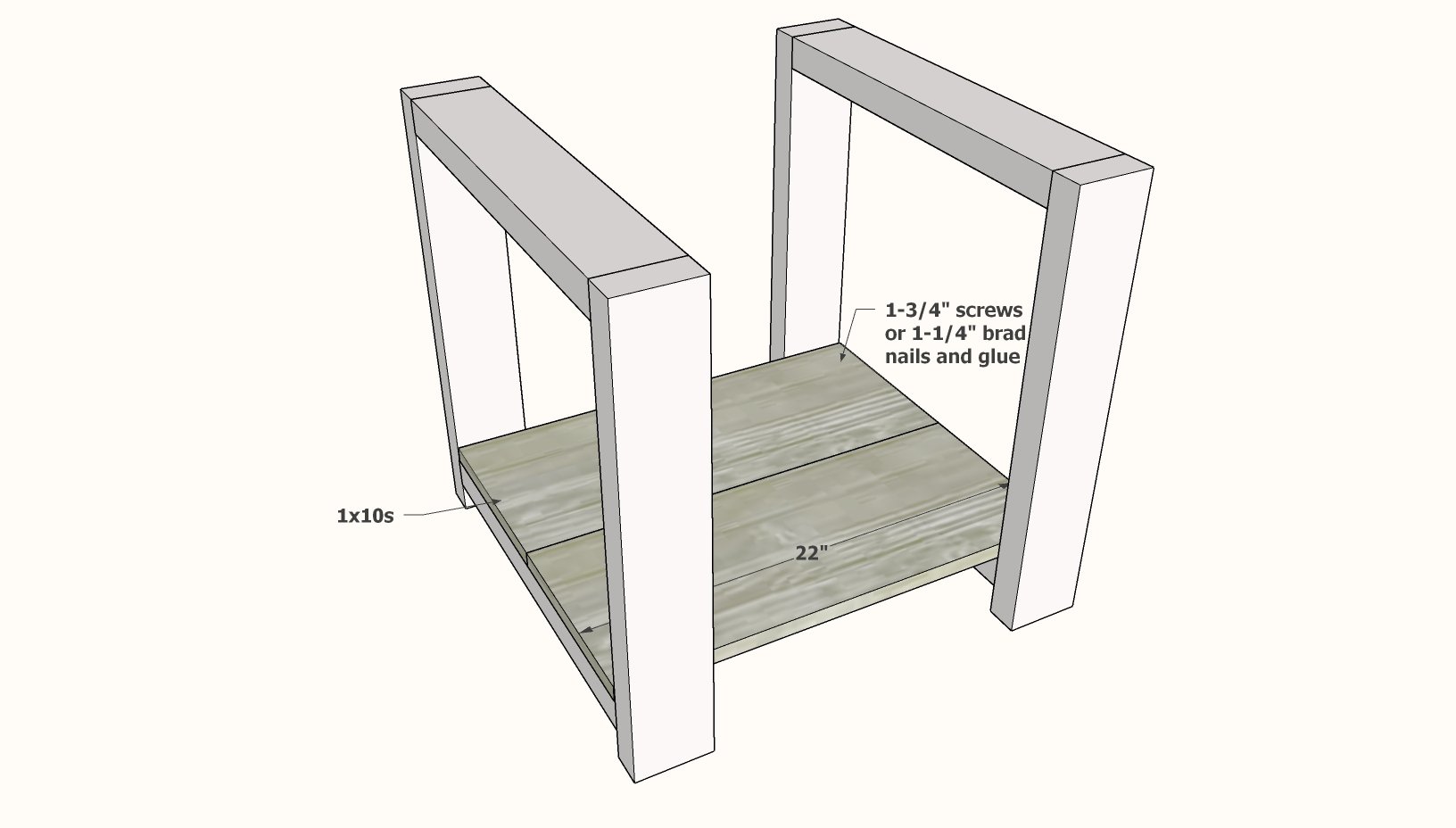
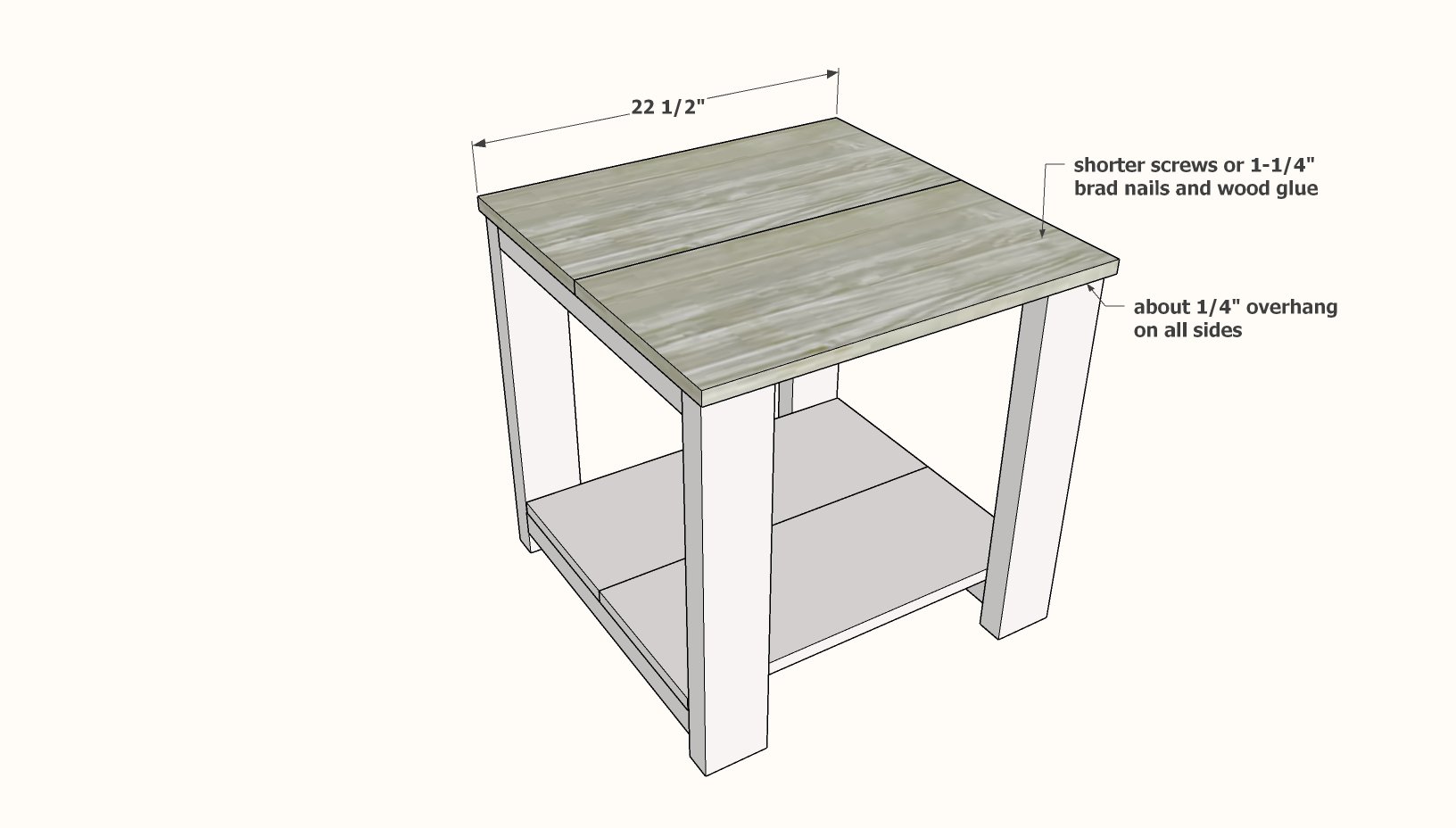
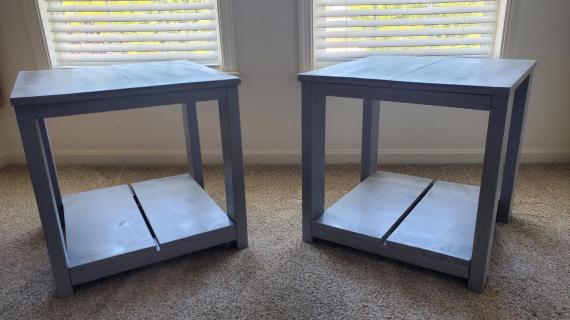
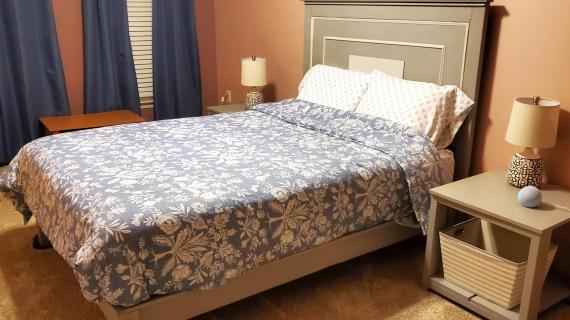
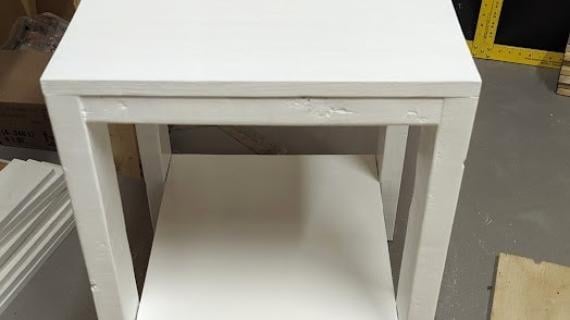

Comments
Jason Sokoloski
Thu, 12/29/2022 - 21:49
Super Simple Side Table plan issue
I am currently working on the Super Simple Side table and have noticed a few discrepancies with the measurements given for the side supports. In the cut list is says 19" and in the drawing of Step 1 it shows 18 3/4".
Unless you want a gap where the 1x10 goes on the bottom shelf, you would need to cut your side rails to 18 1/2" (width of a 1x10 is 9 1/4" and doubled is 18 1/2" . Otherwise, great easy plan...I'm making 4 at once!